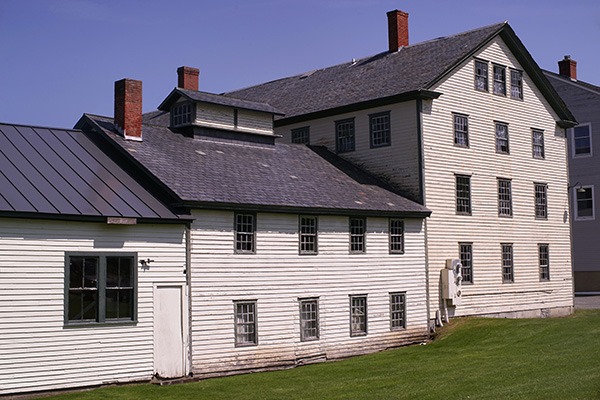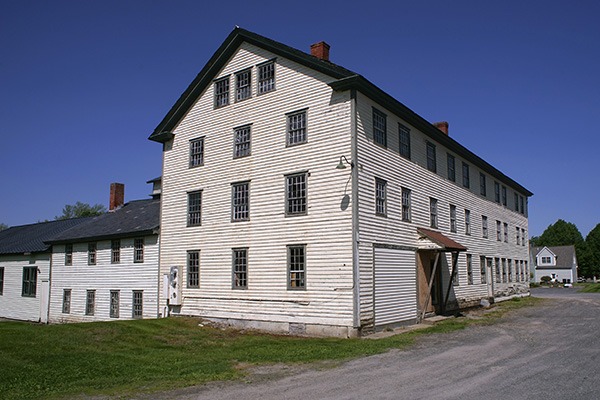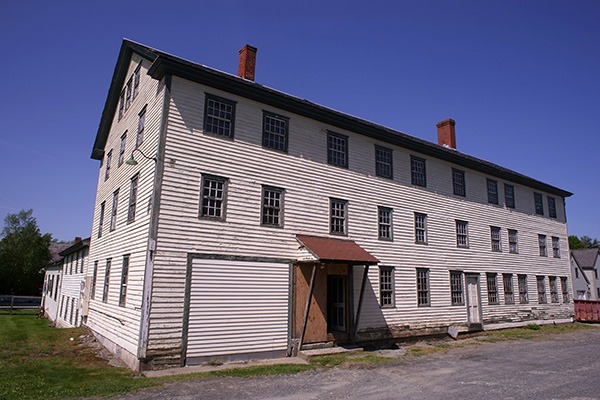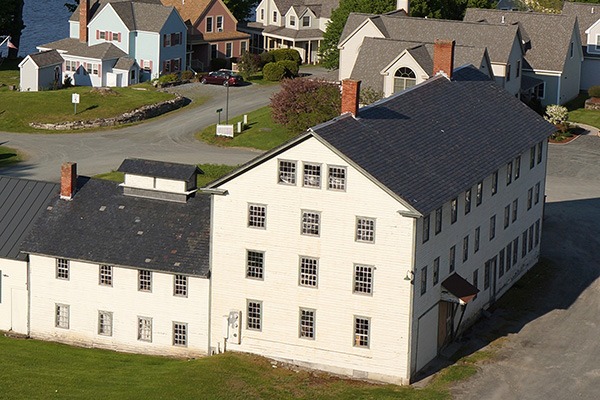Laundry (Wash House)
1813 / 1825 / 1833
One of the larger buildings found at most Shaker sites is the Laundry or Wash House. In the case of the Enfield Shaker Village, each of three Shaker families had their own building equipped for handling the large amount of clothing generated by a Shaker family. Though these building were primarily the domain of the Sisters of the community, these Laundry complexes often contained water powered machinery which needed to be serviced by the Brethren.
A three-part structure, the original section of the Church Family Laundry and Dairy complex dates to 1813 making it the oldest existent building at the Enfield Shaker Museum. This original structure was a two-story building which was expanded in 1833 to better accommodate the increasing population of the Enfield Church Family.
As part of this 1833 renovation, a third floor was added to the original structure along with a full three-story addition to the east end. This expansion dramatically altered the size of the building and was intended to accommodate the new water powered machinery. This machinery, used for washing the clothing, was powered by a series of smaller water wheels which were located on the basement level of the Laundry building. Water was initially fed into the building with an open above ground sluice, but in 1850 the Shakers installed a pen stock, a type of underground water pipe crafted from wood. Once the clothes were washed, they were moved to an upstairs drying room which was heated by steam provided by the boiler in the 1854 Cow Barn.
Dairy
1813 / 1825 / 1833
A two-story building in the center of the Laundry/Dairy complex, the Church Family Dairy is where the Sisters produced dairy products such as butter and cheese. These dairy products were both consumed by the community and were sold to the world’s people.
The original section of the Dairy was completed in 1813 as part of the building of the Laundry. A second-story was added in 1825 to better accommodate dairy production which required both working spaces and storage for the drying/ageing process. On the second floor of the Dairy are whey stains on the wall where drying racks once stood, a testimony to the buildings active use.
The final addition to the west side in 1833 included a cupola which was part of a ventilation system designed to keep the building cool, a necessity in the production of dairy products. Though the Dairy appears to be a section of the larger Laundry building, during the Shaker period it was seen as a separate structure which was entered through a door on the west side. Today, the Dairy is accessed through the Laundry by an entrance on the second floor of the Laundry.
The long single-story addition to the north side of the Dairy was constructed in 1944 by the La Salette Brothers and has had a variety of uses.





